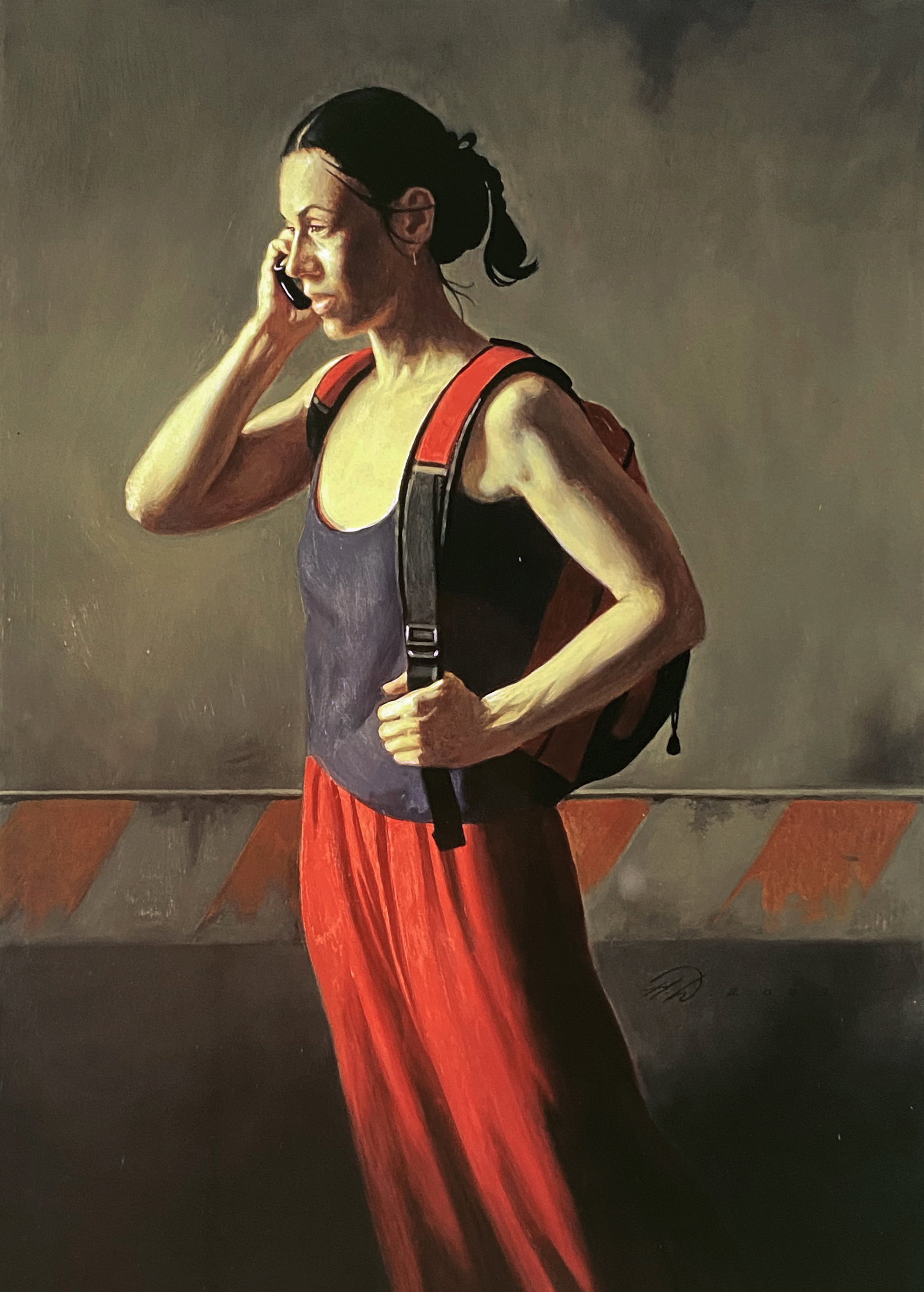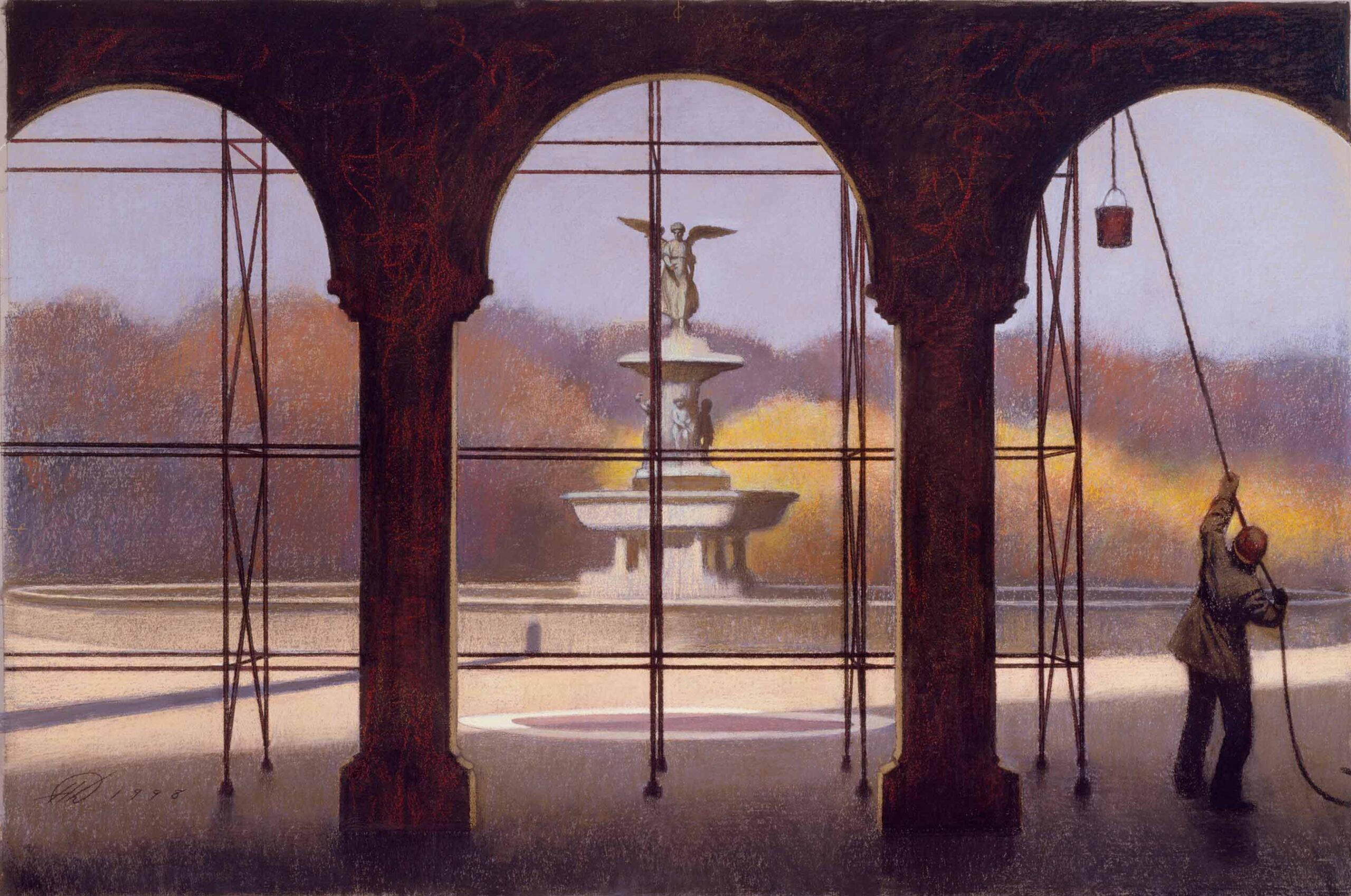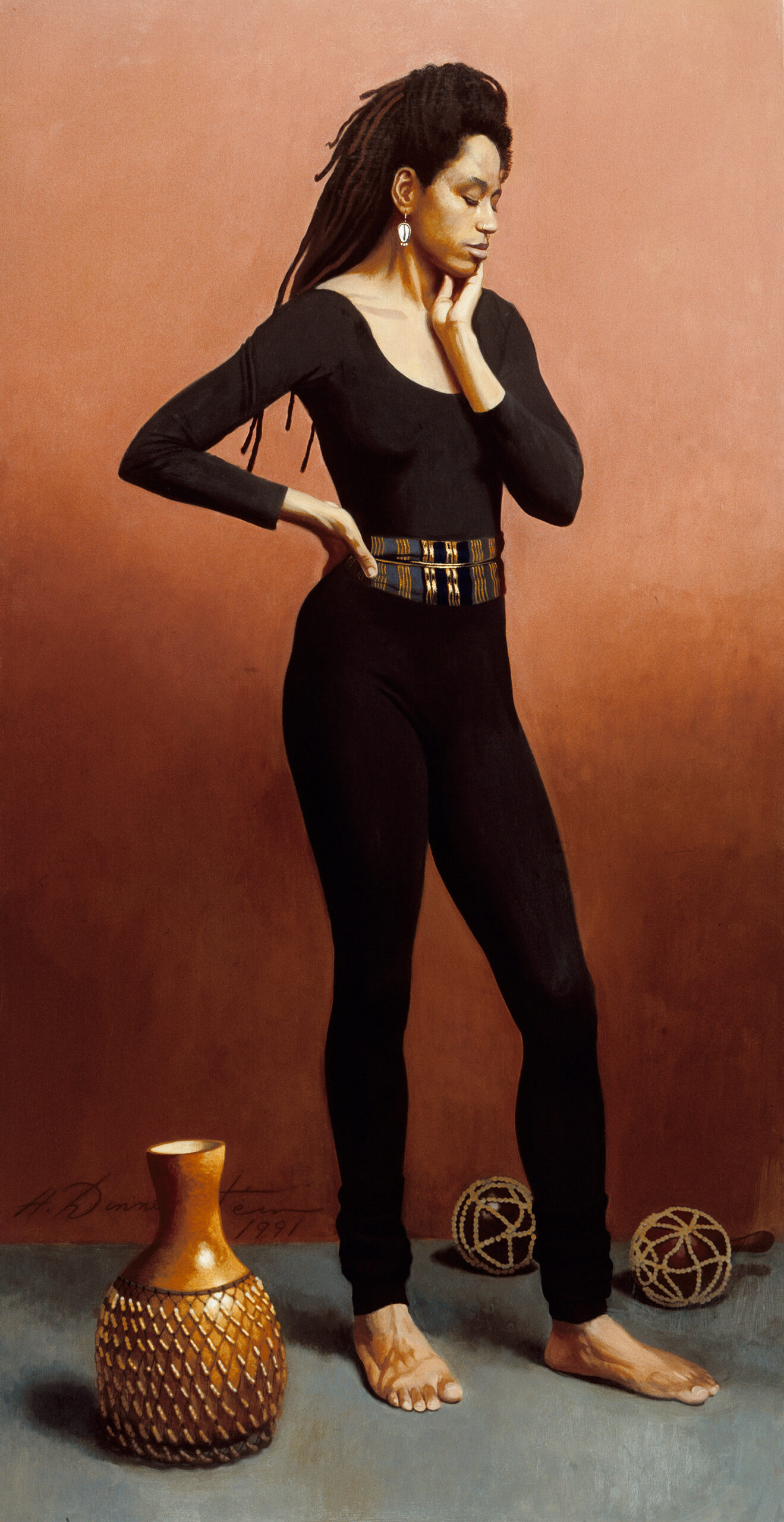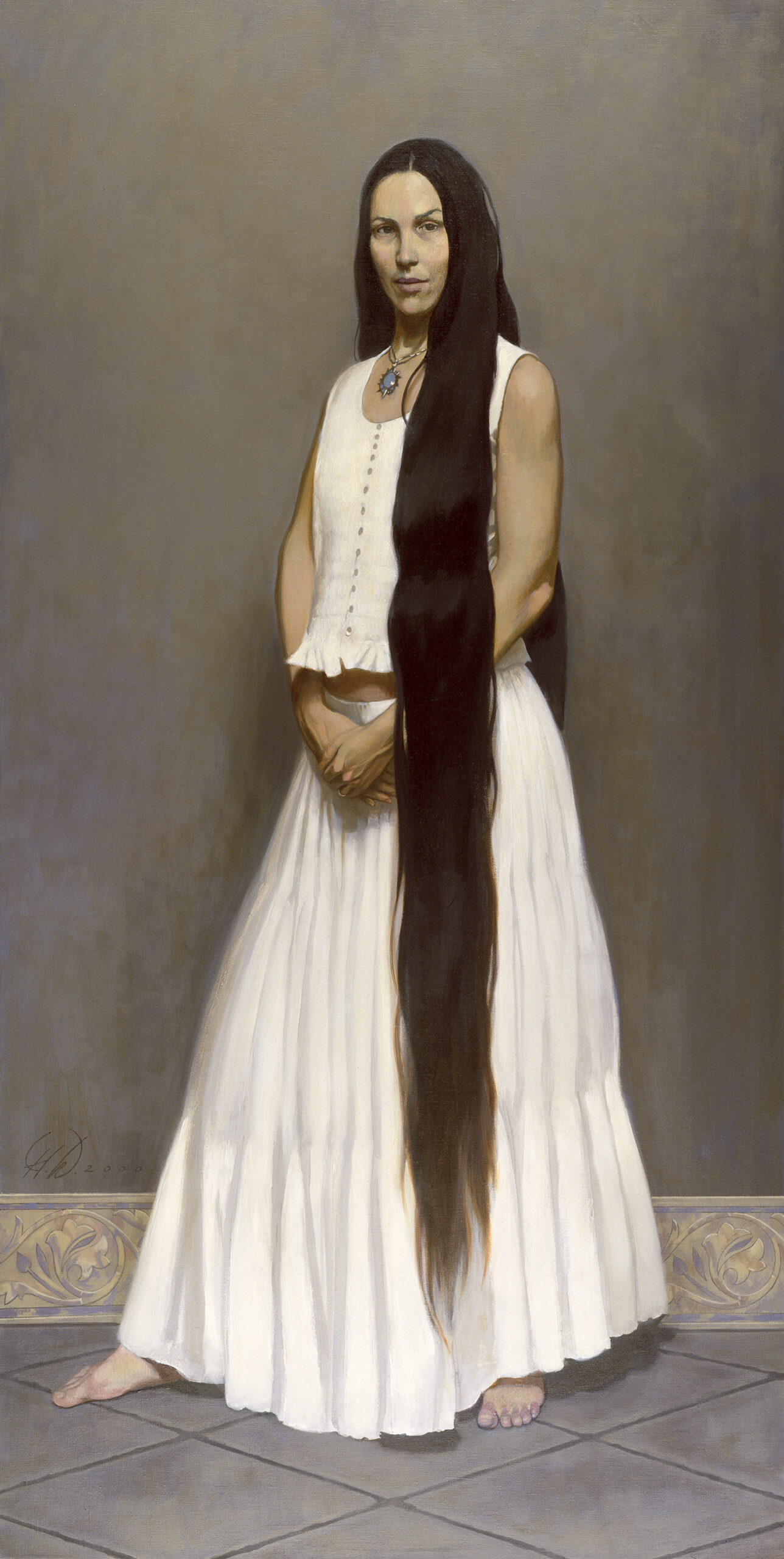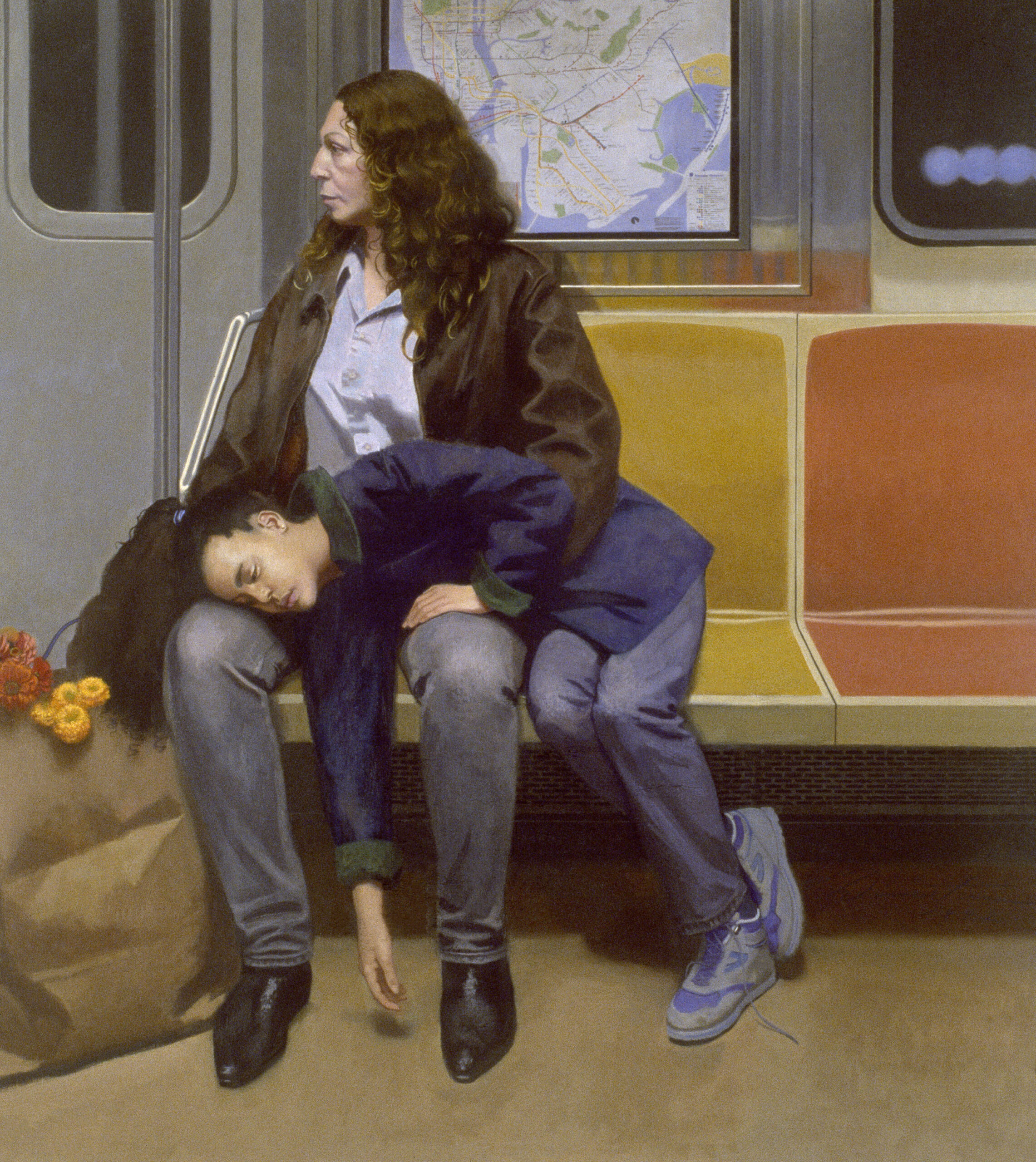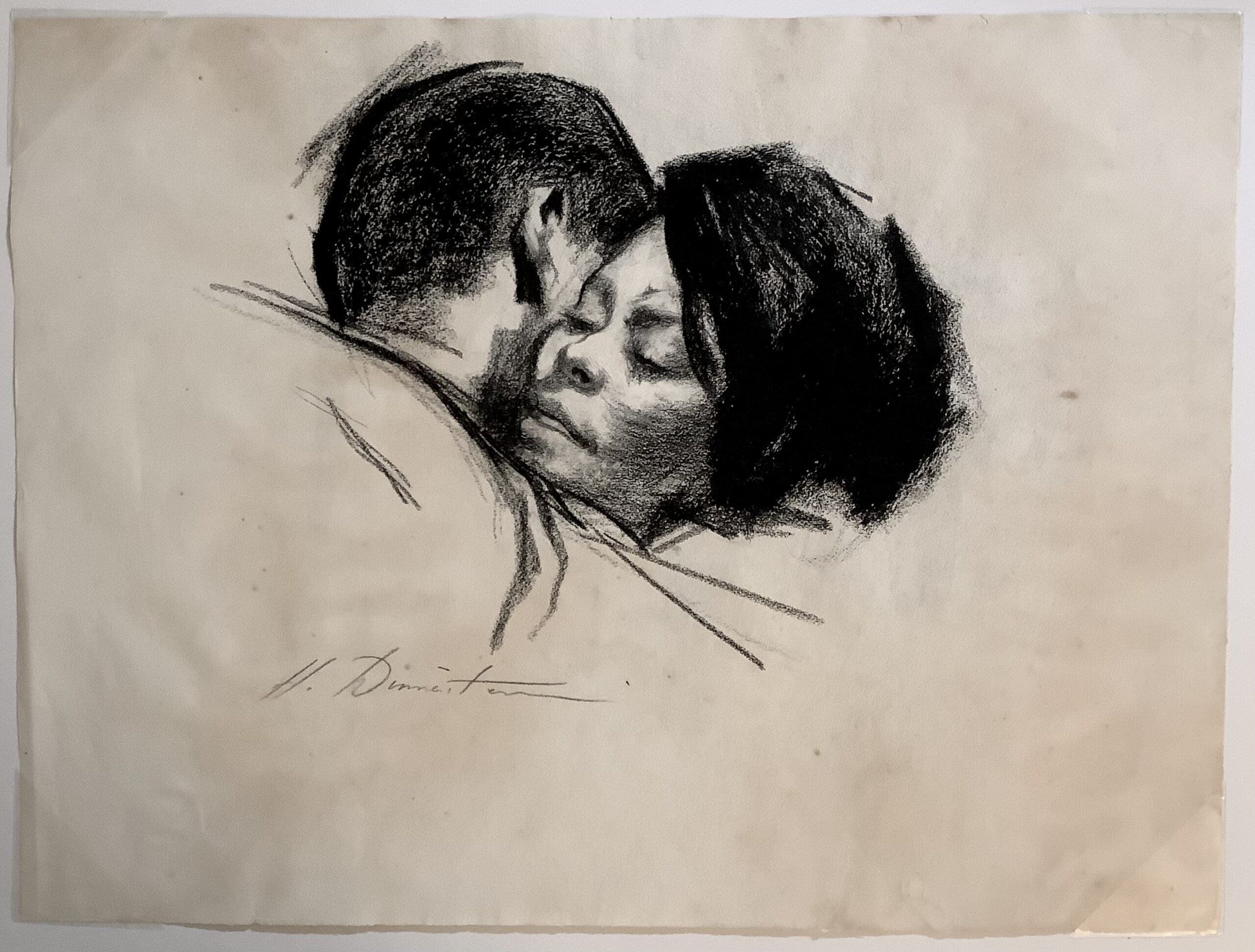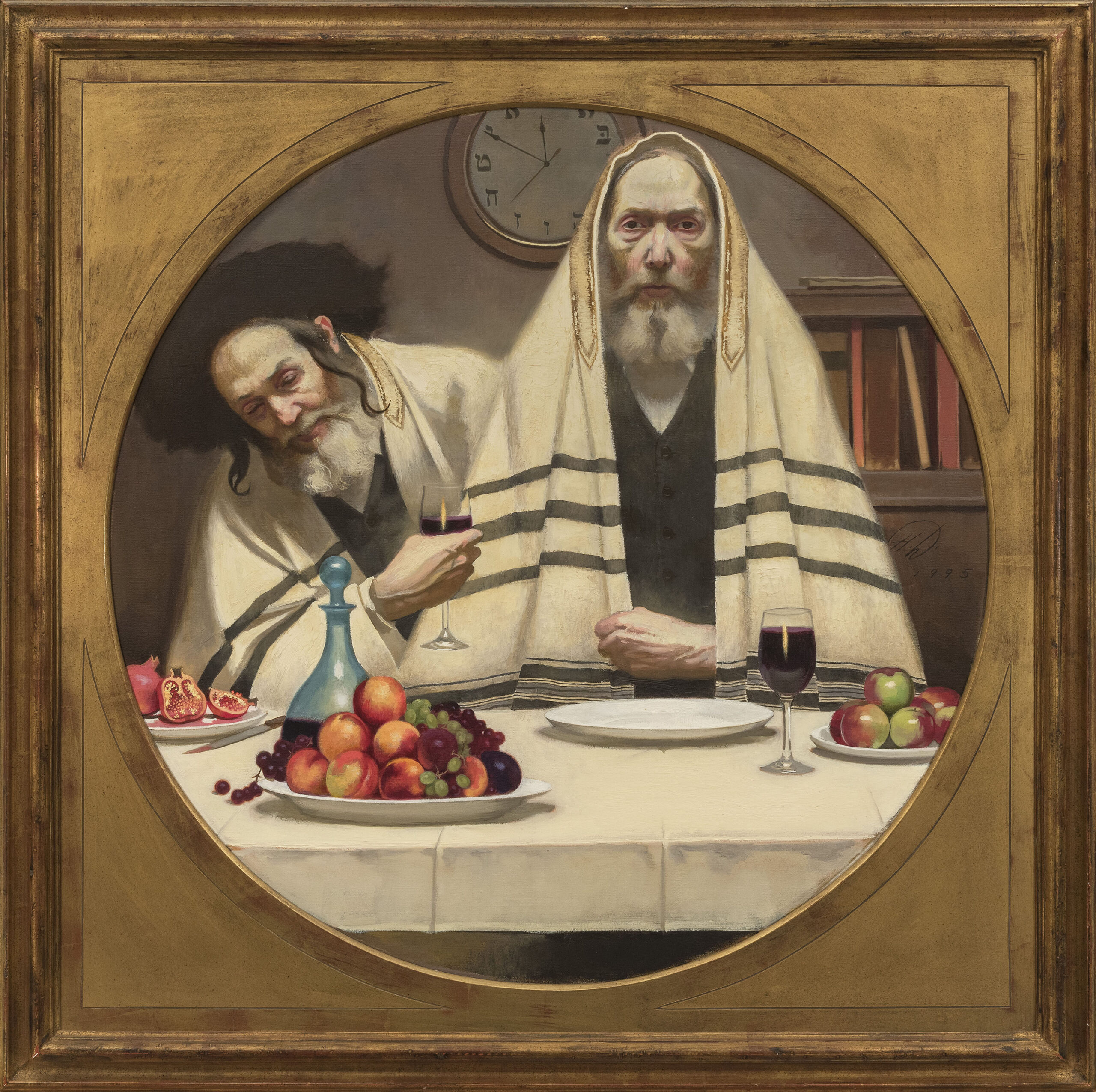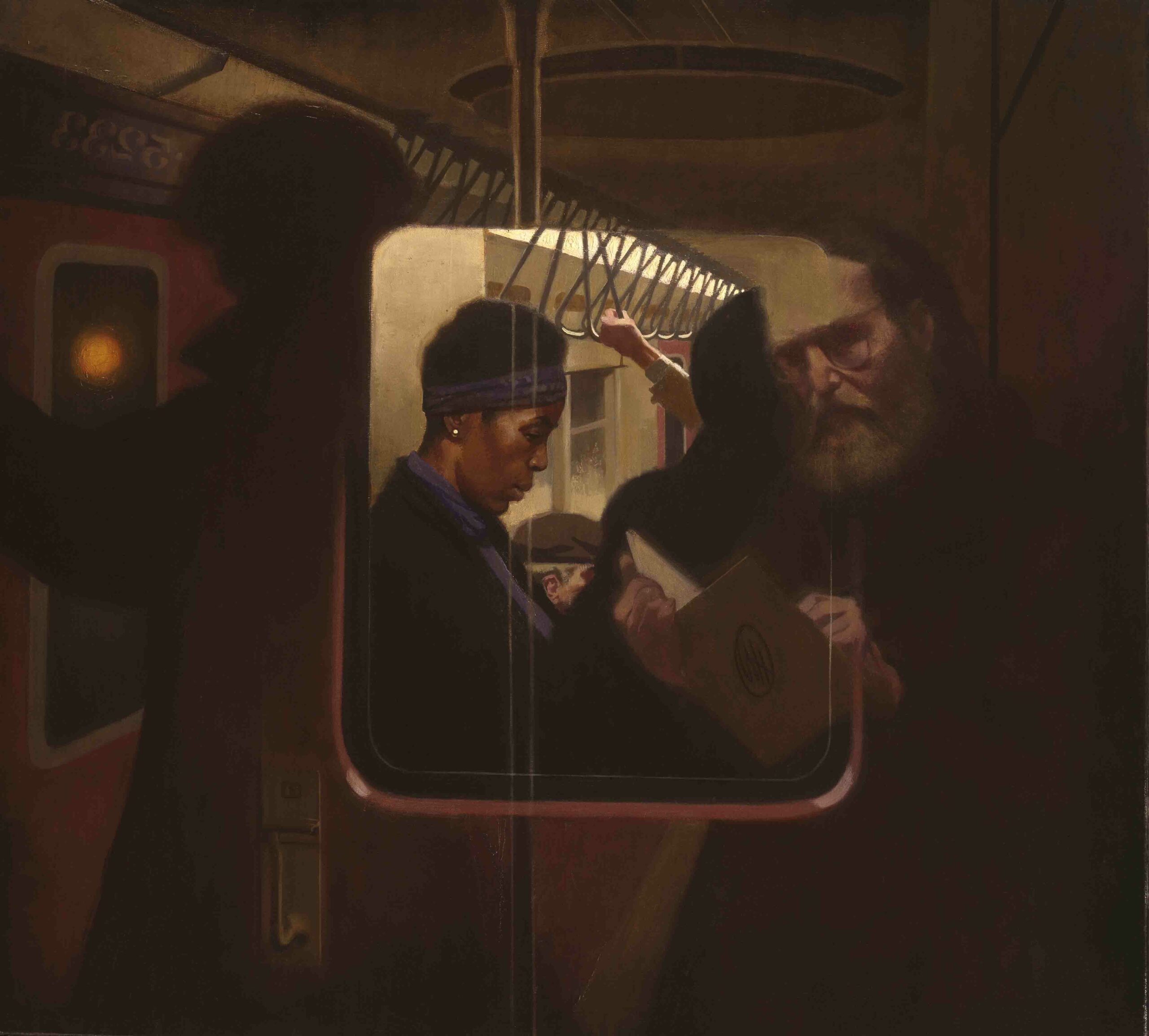A National Academician and lifelong teacher, Dinnerstein’s devotion to representational art established him as one of the past century’s masters of realism. He came of age in an era that embraced abstraction above all else, but, from the beginning, Dinnerstein operated outside of this arena. His highly refined technique was grounded in centuries of artistic practice, but his devotion to his own times and to capturing the plurality of life around him firmly situate his work in a contemporary milieu.
Dinnerstein was born and raised in Brownsville, Brooklyn. His talent for drawing secured him a place at the High School of Music and Art and led him to the studio of Moses Soyer, where he attended weekend classes during high school. He was awarded a scholarship to Pittsburgh’s Carnegie Institute of Technology but found the curriculum too focused on theory. Instead, he enrolled at Philadelphia’s Tyler School of Art, which maintained a strong connection to the tradition of representational art. He also took classes at the Art Students League with Yasuo Kuniyoshi and Julien Levy and was subsequently awarded his first of two Louis Comfort Tiffany Foundation Grants in 1948. His early career was interrupted when he was drafted, serving two years in the army during the Korean War. By the mid-1950s, though, Dinnerstein had returned to painting with his first solo exhibition in New York at Davis Galleries, which was committed to promoting artists working against the grain.
In early 1956, Dinnerstein traveled to Alabama, where he spent ten days documenting the Montgomery Bus Boycotts. The experience had a profound effect on his life as well as his art, allowing him to see “how art could express the passions of contemporary life.” After a childhood defined by the Great Depression, teenage years backdropped by World War II, and an early adulthood marked by the Cold War and McCarthyism, Dinnerstein’s belief in social justice and human rights became fundamental to his art. Dinnerstein’s interest in social justice was initially nurtured through journalistic work for Esquire, in which he illustrated antiwar demonstrations and the social upheaval of the Vietnam Era. His equalitarian view continued, in a quieter vein, on the streets of Brooklyn, during his daily subway commutes and his pastoral encounters in Central Park. This was the New York where Harvey Dinnerstein encountered the diversity of contemporary life on a daily basis.
Gerald Peters Contemporary is proud to have represented Dinnerstein for the past 5 years and saddened by the loss of this fine artist. We will continue to work with the Estate and will have works available in the coming months.




